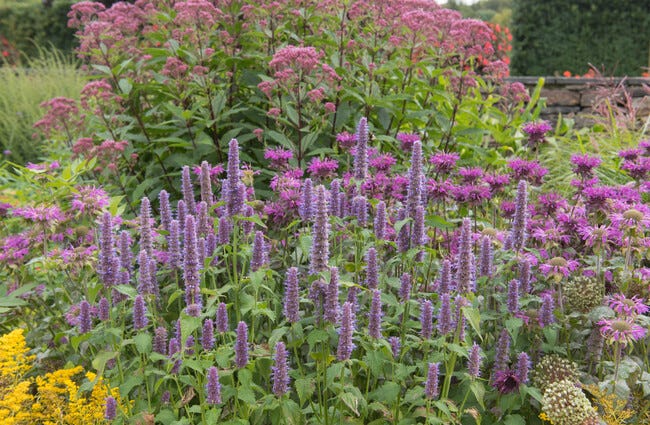Part Of The American Meadows Meadowscaping Learning Center
Native Plants By State, State Flowers & State Birds
Native plants are adaptable, low-maintenance, and beautiful. They are the best choice for habitat-friendly gardens and thriving ecosystems. Find top picks for native plants in your state - and learn about your state bird and state flowers!
Follow Along With More Of Our Guides
About Our State-By-State Native Plant Lists For Each State
Hello native plant enthusiasts! In the lists below, you will find recommendations for some of our most popular native plants and wildflower seeds, listed in the states where they have a native distribution. You’ll also find information about your state bird, state flower, and state wildflower.
The list for your state is a great place for getting started with native plants! Keep in mind that it by no means a comprehensive listing of the hundreds of native plants growing in each state.
Please note that some of the state flowers and state wildflowers may not be native plants.
|
Alabama
Native Plants, State Flower & Bird |
Alaska
Native Plants, State Flower & Bird |
Arizona
Native Plants, State Flower & Bird |
Arkansas
Native Plants, State Flower & Bird |
|
California
Native Plants, State Flower & Bird |
Colorado
Native Plants, State Flower & Bird |
Connecticut
Native Plants, State Flower & Bird |
Delaware
Native Plants, State Flower & Bird |
|
Florida
Native Plants, State Flower & Bird |
Georgia
Native Plants, State Flower & Bird |
Hawaii
State Flower & Bird |
Idaho
Native Plants, State Flower & Bird |
|
Illinois
Native Plants, State Flower & Bird |
Indiana
Native Plants, State Flower & Bird |
Iowa
Native Plants, State Flower & Bird |
Kansas
Native Plants, State Flower & Bird |
|
Kentucky
Native Plants, State Flower & Bird |
Louisiana
Native Plants, State Flower & Bird |
Maine
Native Plants, State Flower & Bird |
Maryland
Native Plants, State Flower & Bird |
|
Massachusetts
Native Plants, State Flower & Bird |
Michigan
Native Plants, State Flower & Bird |
Minnesota
Native Plants, State Flower & Bird |
Mississippi
Native Plants, State Flower & Bird |
|
Missouri
Native Plants, State Flower & Bird |
Montana
Native Plants, State Flower & Bird |
Nebraska
Native Plants, State Flower & Bird |
Nevada
Native Plants, State Flower & Bird |
|
New Hampshire
Native Plants, State Flower & Bird |
New Jersey
Native Plants, State Flower & Bird |
New Mexico
Native Plants, State Flower & Bird |
New York
Native Plants, State Flower & Bird |
|
North Carolina
Native Plants, State Flower & Bird |
North Dakota
Native Plants, State Flower & Bird |
Ohio
Native Plants, State Flower & Bird |
Oklahoma
Native Plants, State Flower & Bird |
|
Oregon
Native Plants, State Flower & Bird |
Pennsylvania
Native Plants, State Flower & Bird |
Rhode Island
Native Plants, State Flower & Bird |
South Carolina
Native Plants, State Flower & Bird |
|
South Dakota
Native Plants, State Flower & Bird |
Tennessee
Native Plants, State Flower & Bird |
Texas
Native Plants, State Flower & Bird |
Utah
Native Plants, State Flower & Bird |
|
Vermont
Native Plants, State Flower & Bird |
Virginia
Native Plants, State Flower & Bird |
Washington
Native Plants, State Flower & Bird |
West Virginia
Native Plants, State Flower & Bird |
|
Wisconsin
Native Plants, State Flower & Bird |
Wyoming
Native Plants, State Flower & Bird |
About Native Plants
- Native plants are essential for healthy ecosystems and habitat. They have evolved over time with local wildlife and climate conditions. Many pollinators have special relationships with native plants that they rely on for survival. For instance, some bees are specialists and require nectar and pollen from specific native plants to survive; and butterflies and moths often have specific host plants needed to nourish their caterpillars. For example, Asclepias (Milkweed or Butterfly Weed) is the host plant required for Monarch caterpillars to survive and grow into Monarch Butterflies!
- It’s OK to grow native plants in your yard that may not be native to your state or region. Remember – just because a plant is not native, does not necessarily mean that it is invasive or harmful. In fact, growing well-behaved introduced plants that are suited to your growing conditions can still provide many benefits to your yard (especially when compared to a traditional turf lawn).
- Know before you grow – It's always a good idea to learn what plants are native, well-behaved, and invasive or aggressive in your region before digging in.
- Learn More: Why Every Garden Needs Native Plants
Explore our full selection of native plants and seeds
More From Our Learning Center

